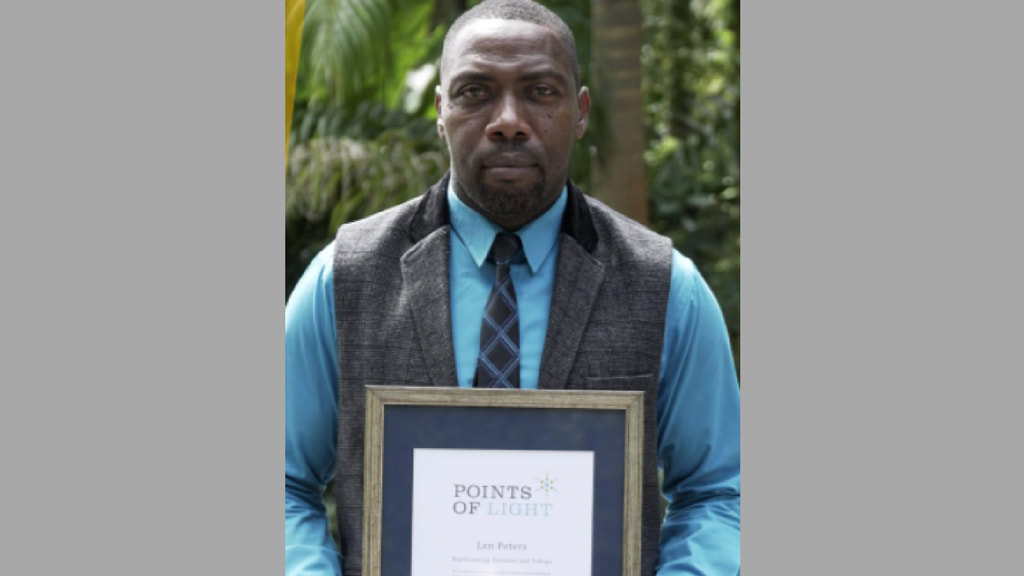 Turtle conservationist and chairman of the Grande Riviere Nature Tour Guide Association Len Peters, has been named the 1st Commonwealth Points of Light Award Recipient 2018. The Points of Light awards is a special series of awards recognising inspiring volunteers from the 52 countries of the Commonwealth. Peters protects 20,000 turtle nests yearly, and has even had his work featured on BBC’s ‘Blue Planet 2’ with Sir David Attenborough. The conservationist was recognised by Queen Elizabeth II on Thursday and named as the recipient of the award in honour of his exceptional voluntary service protecting endangered turtle species. The Queen’s recognition of Peters’ work comes as she offers her thanks to inspirational volunteers across the 52 Commonwealth nations for the difference they are making in their communities and beyond – as part of the lead-up to the Commonwealth Heads of Government Meeting in London April 19-20. In making the announcement, the British High Commission said Trinidad and Tobago is now home to one of the densest leatherback nesting beaches in the world, thanks to Peters’ educational work in local communities and regular patrols of the country’s beaches. The Commission added that the Heads of Government meeting will celebrate inspirational acts of volunteering across the Commonwealth and help inspire others to make their own contribution to tackling some of the greatest social challenges of our time, as these stories of service are shared. Peters, on receiving the award, is quoted as saying that he was honoured to receive the prize on behalf of the dedicated members of his organisation. He added that the award recognises many years of dedicated voluntary service performed by him and the members of his community in protecting the environment and creating sustainable livelihoods. Peters said he hopes that his acceptance of the award would, in some small way inspire others to see the value of voluntary service. Source: The Loop, February 5, 2018.  Is an alternative means of transport on the Tobago airbridge over the horizon? Well, if Raymond McMillan has his way then the answer is yes. A trip to Tobago may cost twice as much as you pay now though. McMillan is the chief executive officer of Sterling Tobago Airways Limited, trading as Tobago Airways, and he believes the national carrier Caribbean Airlines needed competition on the domestic airbridge. McMillan is currently looking for investors to help fund this idea. For investments of US$100,000 and over returns on investment are negotiated on a case-by-case basis. McMillan believes Tobago Airways’ estimated profit after five years will be around US$19.5 million. The initial contract for a plane will be with Airline Solutions Ltd, a company registered in the UK. Social media was abuzz yesterday when the front page of the Tobago Airways document seeking investors was shared. “Something new and exciting is coming soon,” the document stated. The T&T Guardian reached out to McMillan for information on the venture but he said he was having a board meeting at the Magdalena Grand Beach & Golf Resort. According to the Tobago Airways website “something new and exciting” is coming by March 1. McMillan is looking for investors for what he deems a “necessary ‘shift’ in the airbridge between Trinidad and Tobago which has been a ‘sour point’ for over 30 years”. In recent times issues surrounding the Tobago airbridge have come to the national fore, especially in light of difficulties experienced on the seabridge. CAL recently issued a release showing that its performance on the Tobago airbridge has been 86 per cent above industry standards. The national airline also implemented a $50 change fee for passengers missing or changing their confirmed flights. According to a recent Parliament Joint Select Committee, 52 per cent of CAL’s flights are operated on the domestic airbridge and approximately TT$41 million was allocated for CAL as the subsidy on the airbridge for 2017. The subsidy does not cover the entire shortfall between the fare charged for flights along the airbridge, and the cost of running the air bridge, and therefore, the route is unprofitable. Return tickets on CAL for the Tobago air-bridge cost $300. Tobago Airways tickets are expected to cost around $600. Source: The Guardian, January 31, 2018 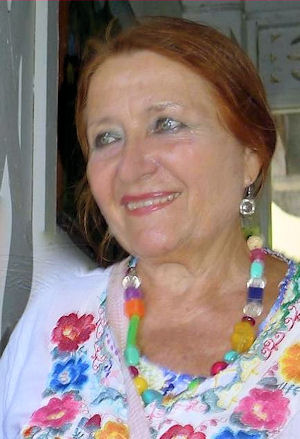 Luise Kimme died far from her German motherland five years ago. But she was far from alone. When the misery that is colon cancer finally claimed her body, Kimme was in the living room of her Tobago home, looking out to Mt Irving Bay, surrounded by her art and her beloved dogs. And Kimme,74, had artist Dunieski Lora Pileta as a caregiver and confidante for six years before her passing. Hours before she died, he had left her and travelled to Trinidad to buy the materials for a school of art they intended to open at her Museum of Art and Sculpture.  That was in April 2013. Much has happened since. Not all of it encouraging. But there is still a chance that her plans to give back to the people of her adopted island, could be realised. Born in during World War II and raised in Berlin, Kimme travelled the world teaching and working, including with the Rasta and the Reggae in Jamaica and the Maroons of Suriname, before finding Tobago in 1979. She never left. Her sculptures of bronze and wood, the paintings, murals and books had brought her worldwide recognition. But it was Tobago that some of her finest work would be done in the studio of that hillside property below the village of Bethel, where she honoured the people of Tobago, its history of enslavement, the religious beliefs, folklore, superstitions and culture. The Tobagonians were the models for some of her sculptures, inspired the paintings, and they built her home and studio. And the island's stray dogs that she found in the village hungry and diseased, became her 'children'. They too were made timeless in her art. Five years later, several of her dogs are still there, cared for by Dunieski who is now the artist in residence at “The Castle”, now owned by Kimme's sister Ilse. It is a place largely untouched since Kimme's passing, containing the detritus of a frantic life, half-done projects, personal possessions, a place that will leave you awe struck. And this is how it will remain, said Dunieski. He is Cuban, only now mastering the English language, and willing to partner with those who knew and loved Kimme, and who want Tobago to benefit from her influence. Dunieski was born in Santiago de Cuba, he told us. “And from very early in life I was doing art, carving with clay, using bricks and stones to make things, from the age of eight” he said. “I was discovered and brought to the art school and passed the elementary level. If you passed you went on to the academy where you would do a test to go on to the university”. Dunieski had become skilled in the ancient art of lost-wax casting, by the time Kimme found him 17 years ago. She was in Santiago de Cuba for the annual International Caribbean Festival and was in search of someone capable of doing bronze casting. The two would work together until her death, with Kimme travelling frequently to Cuba to learn to work with beeswax. Said Dunieski: “My first time in Tobago was about eight years ago. I visited for three months, After that I left and I went to Europe, Spain …When she got sick she called me. She had colon cancer that would metastasize all over her body. (At the time) I was in Martinique doing a ten metre monument near the airport. She wanted me to come”. Dunieski, a 42-year-old married father of three girls, said he considered it a privilege. “We were close. In Cuba, we would go to parties, to dances, she was a professional (salsa) dancer. People thought we were like girlfriend, boyfriend. But no, she was like my mother. In Cuba, I helped her with plane tickets, and making links for her exhibitions in Havana and Santiago de Cuba, her taxi, (and) accommodation”. Six years ago, Dunieski came over to Tobago. “I was like her nurse. I couldn't speak a word of English then. And I had to go with her to the Oncology Centre in Trinidad to talk to the doctor, to get blood tests, to do this, to do that, then find my way to the guest house on Tragarete Road by getting a taxi. I was so afraid. But I learned”. Those who knew Kimme remembered her courage in the face of the disease. She continued working, and when she could no longer walk, she carved on her knees. The day Kimme passed away, Dunieski said he made her comfortable, before leaving for Trinidad. “We went to get the material and stuff to build, intending to open an art school here to teach people. We also wanted to make a theme park, with big statues two metres high to attract people, to help the tourism. And that same day she died. When I left, I said wait for me, I am coming back soon. But she was gone, and never came back”. As with many artists, Dunieski has grand ideas beyond the reach of many. One of them, he said, was shared some years ago, when Orville London was still the Chief Secretary of the Tobago House of Assembly and visited the museum along with some other island politicians. Dunieski had created a scale model in bronze of a planned monument to remember Tobago's slave and sugar plantation history. Ten metres high and erected in a prominent place, it would be an expensive project that would employ many, the sculpture to be unveiled on an Emancipation Day as an everlasting symbol of the African man's freedom and what it cost. London was impressed and considered it a project to pursue, said Dunieski. Nothing has happened since. Maybe there is someone out there willing to fund it. Meanwhile, the work created at "The Castle” continues to draw crowds at exhibitions around the world. “Shango” the bronze that visitors would have seen standing sentinel at the entrance to “The Castle”, is off to Stockholm, Sweden. The rest of the art, conjured in the minds of Kimme of Dunieski, is on that Tobago hillside, awaiting your visit. ..and teacher of the Prime Minister, Chief Justice and ministers of government Tobagonian Cyril Anthony Collier, 77, is a recent retiree of the University of T&T where he was a senior instructor in drama. Collier’s career in the field of education spanned over four decades where he served in the capacity of teacher/educator.
Collier earned his diploma in drama in education at the University of Newcastle–upon-Tyne, under the stewardship of world-renowned Dorothy Heathcote. He is also the holder of a Bachelor of Arts and Master of Philosophy in drama\theatre arts, which he obtained at the University of Exeter in the UK. Collier has been heavily involved in the cultural landscape of T&T having served as director /producer of the annual Carnival Sunday night Dimanche Gras show on numerous occasions and as an adjudicator in the Prime Minister’s Best Village competition. Collier has also served as a board member of the National Carnival Commission (NCC), a position which afforded him the opportunity to make an immense contribution to T&T Carnival. He has also served on the board of the Export Centres Company of T&T, assisting with the export of our local Carnival culture to Phoenix and Los Angeles. Collier was born in Lambeau, Tobago and attended the Lambeau Anglican School. He later attended Scarborough RC and Bishop’s High School. His teaching career commenced in 1962. His first teaching appointment was at the Bon Accord Primary School where he served for a period of four years before entering the Port-of-Spain Teachers Training College, graduating in 1967. Given his passion for the art form, upon his return to Tobago, Collier enrolled as a member of the Kilarney’s Dance Group and later formed the Phoenix Dance Company which outshone rivals at the Arts Festival for several years. Collier eventually returned to his alma mater when he received a teaching appointment at Bishop’s High School and taught geography and physical education. While at Bishop’s, he not only revitalised the drama club. Among Collier’s students during his tenure at Bishop’s High School were Prime Minister Dr Keith Rowley, Ivor Archie, Rennie Dumas, Dennis Moses and Eudine Job-Davis. Collier’s teaching career eventually took him to St Mary’s College. Here he had the privilege of teaching public servants as government ministers Maxie Cuffie, Stuart Young and Daryl Smith. After an extensive and prominent career in both primary and secondary education, Collier transitioned to tertiary education with his appointment as a lecturer at the Valsayn Teachers Training College. Here he taught geography and dance/drama. In 2006, when the Valsayn Teachers’ College was appended to the University of Trinidad and Tobago, Collier was elevated to the position of senior lecturer in drama. While at UTT, he guided his students into the production of numerous weddings to showcase the traditions and cultural differences of the diverse ethnic groups in T&T. Collier’s most recent contribution is the completion of his doctoral thesis at the age of 77. His dissertation is entitled Behind the Mask: A Phenomenological inquiry into the Meanings, Practices and Socio-political Relations of the Dimanche Gras Show from 1999-2015 in Trinidad. Collier has expressed is deep gratitude to professor Hollis Liverpool, Dr Rita Pemberton and Dr Hazel-Ann Gibbs De Peza. He also acknowledged professor Valerie Stoute for her support and encouragement throughout this journey. As for his plans for the future, Dr Collier would like to publish certain aspects of his doctoral dissertation and is currently working towards achieving such. “I guess once an academic, always an academic,” he concluded. Source: Shastri Boodan. Trinidad Guardian, January 3-, 2018  Ottawa, Ontario January 30, 2018The Government of Canada is committed to build a better, more inclusive country that recognizes the contributions of all, and creates better opportunities for more Canadians. The Prime Minister, Justin Trudeau, today announced the Government of Canada will officially recognize the International Decade for People of African Descent. This Decade, which spans from 2015 to 2024, is an opportunity to highlight and celebrate the important contributions people of African descent have made to Canadian society. It also provides a framework for recognition, justice, and development to fight racism, discrimination, and the ongoing inequalities that Canadians of African descent face. The Government of Canada has heard from concerned citizens and organizations from across Canada, including the Federation of Black Canadians, that we need to do more to work with and support Canadians of African descent. In recognizing the International Decade, the Government of Canada commits to a better future for Black Canadians. This means learning more about the issues that affect Black Canadians, including improving research and data collection, so we can better understand the particular challenges they face. Mental health challenges and overrepresentation in the corrections system have been raised in particular by community leaders as barriers to Black Canadians experiencing full and equal participation across society. Over the past two years, the Government of Canada has taken concrete measures to fight inequality and improve the lives of all Canadians, including those of African descent. We have helped parents with the high cost of raising kids through the Canada Child Benefit, and expanded the Canada Pension Plan so more people can retire with security and dignity. We have also made significant investments in student grant programs, mental health initiatives, and affordable child care, and introduced a National Housing Strategy that will solve housing security for many vulnerable Canadians. The Government of Canada will continue to build on these efforts, and create a country where more Canadians have a real and fair chance at success. “Today is an important day for Canada. Our commitment to the International Decade will help us better address the very real and unique challenges that Black Canadians face, and bring us closer to a more just and inclusive country.” —The Rt. Hon. Justin Trudeau, Prime Minister of Canada
A Walk Down Memory Lane :The Days When Plaintain was the Most Important Food Crop in Our Country.2/4/2018 A large banana and plantain harvest in Trinidad circa 1900. Given the recession that we are in, now is the ideal time to focus on growing our own food. Are you aware that the plantains , were once quite important, not just to the economy but also to the culinary history of the island? The following history about the plantain in Trinidad and its many uses back in the early years is taken from renowned T&T historian Angelo Bissessarsingh’s archives "To every bred in the bone Trini, a banana is a fig regardless of variety—Gros Michel, Plantain, Lacatan or the diminutive Chiquito. When the first permanent Spanish settlement was made in 1592 at San Jose de Oruna (St Joseph), the governor of the time imposed hardship on the native population in the form of a tax or tribute which was payable in both gold and provisions. The reprehensibly lazy vecinos or Spaniard inhabitants of San Jose subsisted on these tributes rather than cultivate anything themselves so that one observer of the period could note that the plantain was the most important foodstuff in the land and indeed, starvation would be the result of its failure. Taxation up to the early years of the 1700s continued to be paid in eatables with a bunch of plantains being valued at one real or Spanish dollar. With the coming of hundreds of French planters and their slaves after the Cedula of Population was introduced in 1783, plantains were of even greater significance. Slaves for the most part were allowed provision grounds where they raised crops for their own sustenance and for sale. Aside from plantains, bananas were also grown and this is how “green fig” found its way into the echelons of local gastronomy. Whether served with saltfish or cooked with ground provisions in a good oil-down, it soon became a cheap, starchy and nutritious staple that could be turned to good purpose since the tree was easily propagated even in the most unforgiving of soils. There was abundance of plantains and bananas in the 19th century as cocoa production boomed. When the young cacao trees were set in the ground, they required a lot of shade and so in their formative years were sheltered by banana or plantain trees. Such was the alimentary value of plantains in particular that in 1858 Dr Louis De Verteuil wrote: “The plantain is extensively used in Trinidad, and on the neighbouring continent: it is a cheap, wholesome and nutritious diet, and perhaps the most productive of all alimentary plants in fact, field labourers contend that it is better suited to the support of their strength, in manual labour, than bread at any rate, it forms the staff of life to the generality of Creoles. Its nutritive value has not yet been ascertained, but Boussingault considers it superior to that of potatoes; it is also superior, in general opinion, to that of cassava and rice: it may rank as a farinaceous aliment, containing albumen and gum. The plantain is used either in the ripe or green state: in the former it is eaten either as a fruit, or prepared in various ways with sugar and spices, as confectionery. When green, it is either roasted, dressed with meat, or simply boiled, and afterwards crushed in a mortar so as to form a thick paste, which is used instead of bread.” Eventually, local production could not supply the demand of plantains in Trinidad. Well into the 1930s, more than seven million plantains and more were imported from Venezuela to plug the gap. Bananas became a vital cash crop in the early years of the 20th century. Although never produced in the same quantities as the Windward Islands (which even today are heavily reliant on this produce), considerable acreages were planted especially in the rolling hills of the Central Range. Large banana plantations producing fruit mainly for domestic consumption and occasional export to Europe existed in Tabaquite, Talparo, Biche and Rio Claro. At the Imperial College of Tropical Agriculture (forerunner of UWI St Augustine) numerous experiments were carried out in an effort to produce disease-resistant stock and increase yield of both bananas and plantains. In the annual bulletin from the Department of Agriculture for 1928, production tables showed an annual tally of more than eight million pounds of bananas being grown. The advent of the oil dollar drew labour away from agriculture and production fell but in the lean times of WWII when imported foodstuffs were scarce and the government commenced a “Grow More Food” campaign, plantains found new relevance. Thinly sliced whilst half ripe and dried, they could be pounded into a glutinous flour substitute. Plantain chips also were quite popular and substituted for potato chips at cocktail parties. Even today, no real Sunday lunch can compare to a dish of pong plantain and callaloo. Source: by the late Angelo Bissessarsingh, Virtual Museum of Trinidad and Tobago by Angelo Bissessarsingh Plantation Owners in Banana Plantation in Trinidad in early 1900s
The Trinidad-Demerara connection in the 19th century (By the late Angelo Bissessarsingh) In the bustling heart of the city of San Fernando in south Trinidad there is an old colonial graveyard called Paradise Cemetery. Among the many memorials of British officers, planters and clergy are a few which draw a tangible connection between the sugar-belt of the Naparimas (of which San Fernando was the capital in the 19th century) and that of Demerara in what was then known as British Guiana. One monument in particular reads: “Isabella Wilhelmina Vass (nee Osborne,) the beloved wife of Alexander Holme Vass of British Guiana, who departed this life on the 18th day of June 1911 aged 37 years. When the day of toil is done, when the race of life is run, Father grant thy weary one life forevermore. When the breath of life is flown, when the grave must claim its own, Lord of life be our crown, and grant us life forevermore. “ Alexander was a Scotsman and manager of a sugar estate in Demerara before he came to Trinidad to work around 1900. Thirty years prior, the Colonial Company had erected what was then the British Empire’s largest sugar factory on one of its largest sugar estates, some four miles from San Fernando. Called Usine Ste. Madeline, it utilized the vacuum pan process which had already been put to good purpose in Demerara as one source recounted in the 1880s: “When the canes are cut they are brought in punts along the canals and deposited. They are put between large and heavy rollers, and the juice crushed out. The liquor, having been boiled to a certain density in the coppers, is put into a reservoir, and drawn thence by suction into a vacuum pan. It then goes into the centrifugals, the rapid revolving movement of which cleanses the sugar and makes it bright and dry, fit for immediate use. It is not necessary at this point to enter into any technical details. Suffice it to say that every possible experiment has been tried to increase the yield of the cane and improve the quality of the sugar, until now the Demerara crystals have a world-wide reputation. In Demerara an average of 2^ to 3 tons of sugar may be expected from an acre of cane. Upon estates particularly well situated, the yield is greater.” The Usine Ste. Madeline quickly became a central refinery for a couple dozen estates which produced the bulk of the canes in the Naparimas. Moreover, from the 1880s onward, a significant peasant farmer class had been established when thousands of indentured Indians (who began arriving in the island as labour in 1845) settled and became small cane farmers. These smallholders produced as much as 20% of the intake of Usine Ste. Madeline which was fed by a vast private railway network that fanned out over many miles. The rail yard was described by J.H Collens in 1887 as follows: “When a stranger, during crop season, enters the busy mill-yard, with its network of railway lines—a sort of miniature Clapham Junction in its way—its lively little locomotives, ‘ Kit,’ ‘ Dart,’ and other members of the family, hurrying in with any amount of noisy bustle from all sides, with their burden of canes in tow. Here we see seven of these small but powerful ‘ Puffing Billies,’ six being constantly on the go during the busy period, with 104 clean, strongly-built trucks, carrying six tons each, for the transport of the canes from the different estates to the central factory. Inside the yard itself are over 1″5 miles of rail, and the seventeen offshoots cover a distance of 18.58 miles, irrespective of the Cipero and Usine St. Madeleine main lines. In all, there may be said to be 24-08, or over twenty-four miles of lines, railway gauge (4 ft. 8-J- in.), belonging to the company and converging towards the works. Here, too, apart from the serious business of sugar-making, are shops where turning, fitting, and smiths’ operations are carried on,so that any breakdown of the machinery may be promptly and effectually remedied without loss of time.” The awesome infrastructural scope of Usine Ste. Madeline was hopelessly beyond the existing pool of technical competence available in Trinidad’s domestic sugar industry at the time and thus many experts from British Guiana (particularly Demerara) came to the Naparimas to manage the facility. Not only did the mechanics, boiler-men, railway engineers and mill supervisors come, but also agricultural technicians and overseers who knew how to maximise the productivity of the fields. Sugar was to dominate Trinidad’s economy at least until the 1920s when the oil industry got underway and thus the estates of Demerara were a steady supply of trained personnel for Usine Ste. Madeline and the Colonial Company. Even the sole newspaper in the Naparimas, the San Fernando Gazette (1850-96), published news items from Demerara thus exemplifying the solid link between the two territories. Common reprints were obituaries like this one: “Mr. Templeton in Demerara. Aged 70 years. Partner in the firm of Pasley, Templeton and Co. of Demerara. Lived in the tropics from age 17, arrived from Trinidad about 1840 and had a dry goods business. Reported from the Argosy and Demerara Chronicle 24th April 1888” Not all of the newcomers from Demerara were sugar-specialists. Some, like the Chinese Austin family, settled in Cedros in the far south-western tip of the island around 1890 and began manufacturing carbonated drinks. Indeed, almost the entire soft drink industry in Trinidad, at one time, bought its bottling and aerating equipment from Alexander Russell and Co. in Georgetown. Popular brands like Serra Kola Champagne and McShine’s aerated drinks owed their existence to machines imported from Georgetown. Though now largely forgotten, the ties between British Guiana and Trinidad during the reign of King Sugar greatly contributed to the economic well-being of the latter colony. This 1890s photo shows croptime at Usine Ste. Madeline which was the largest sugar refinery in Trinidad and the British Empire when it was built in 1870. Many of its senior technicians were from Demerara’s sugar estates.
|
T&T news blogThe intent of this blog is to bring some news from home and other fun items. If you enjoy what you read, please leave us a comment.. Archives
May 2025
Categories
All
|
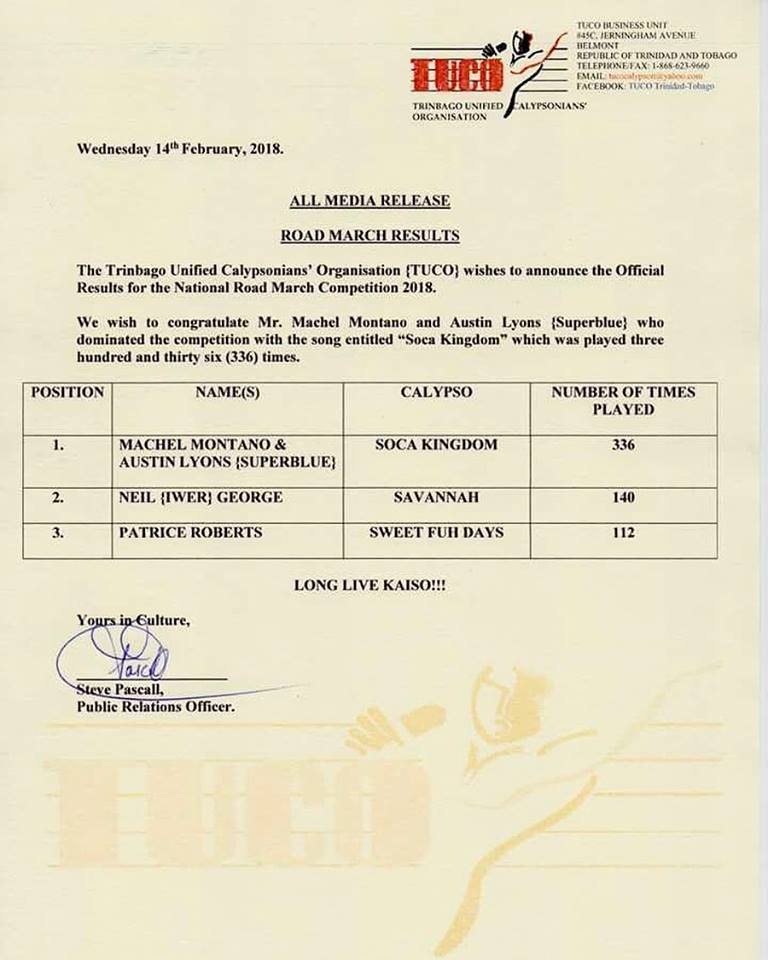
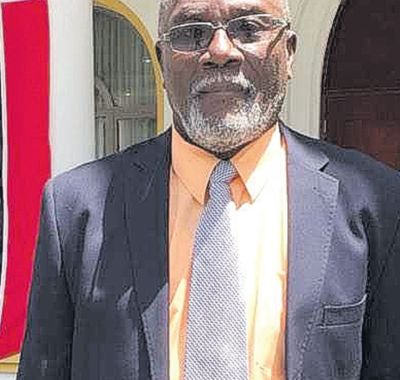
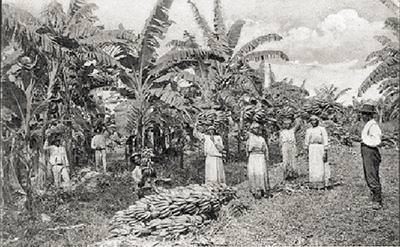
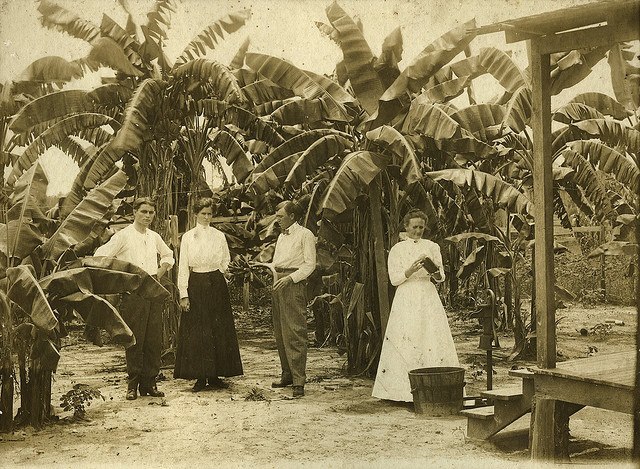
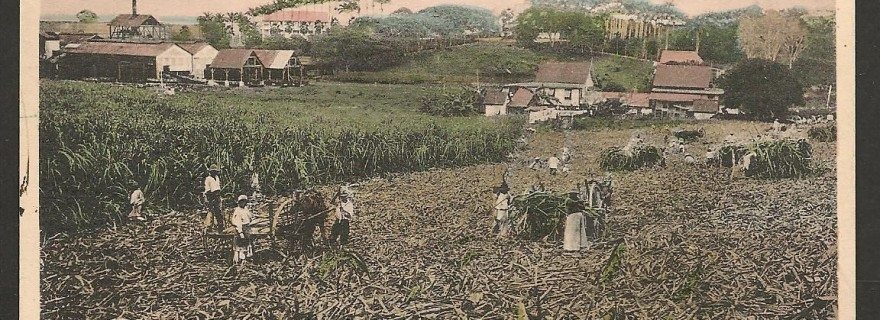

 RSS Feed
RSS Feed